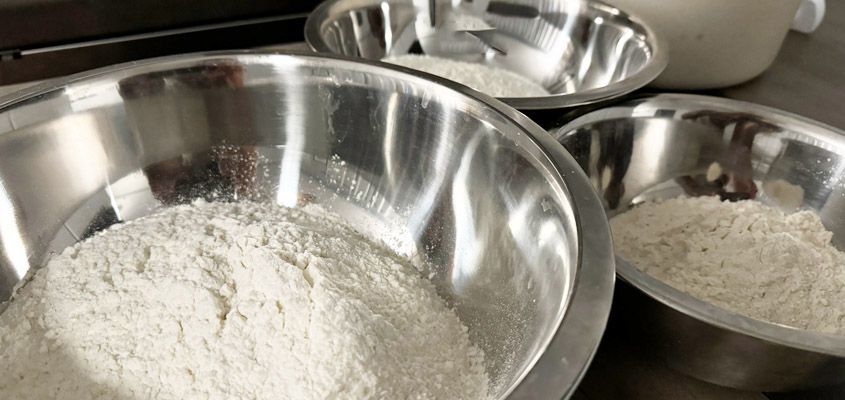
Whole wheat flour is often touted as being the healthier flour when compared to white flour. The bran (the part of the wheat that is present in whole wheat flour but is removed from white flour) is where most of the vitamins and minerals of wheat are contained.
But are those vitamins and minerals even able to be absorbed by your body? Like a cruel joke, the bran is also where the most phytic acid lives. The enzyme inhibitor that prevents you from absorbing nutrients by binding to them.
To us, bread and grain-based foods are happy foods. They bring people together, they’re fundamental to many cultures, they spark creativity in the kitchen and they are a satisfying compliment to great meals. But we do not consider them healthy in terms of providing necessary vitamins and minerals.
For that, we seek out the foods that are evolutionarily consistent in having the highest amount of nutrients that are actually bioavailable to us – meat, animal organs, eggs, fruit, dairy and honey.
Since we’re relying on those foods for nourishment, we want to make sure our bread isn’t inhibiting us from absorbing the nutrients. Hence a big reason why we mostly use sifted white flour is that the bran is removed and along with it, most of the phytic acid.

We use the fermentation process of sourdough to break down the remaining phytic acid along with the phytic acid in the small amount of whole wheat flour that we use for taste and to support the regenerative farm it comes from.
In addition to the phytic acid, we’re happy to remove the arsenic that also has its highest concentration in the bran.
It’s important to note that we use organic, sifted white flour. It is not bleached, bromated, enriched or given any other treatment that is responsible for giving white flour a bad rap.
Organic, sifted white flour is a big part of the formula for our mission: to provide the least harmful version of bread.
Sign up for sourdough updates, promos and info delivered to your inbox!

